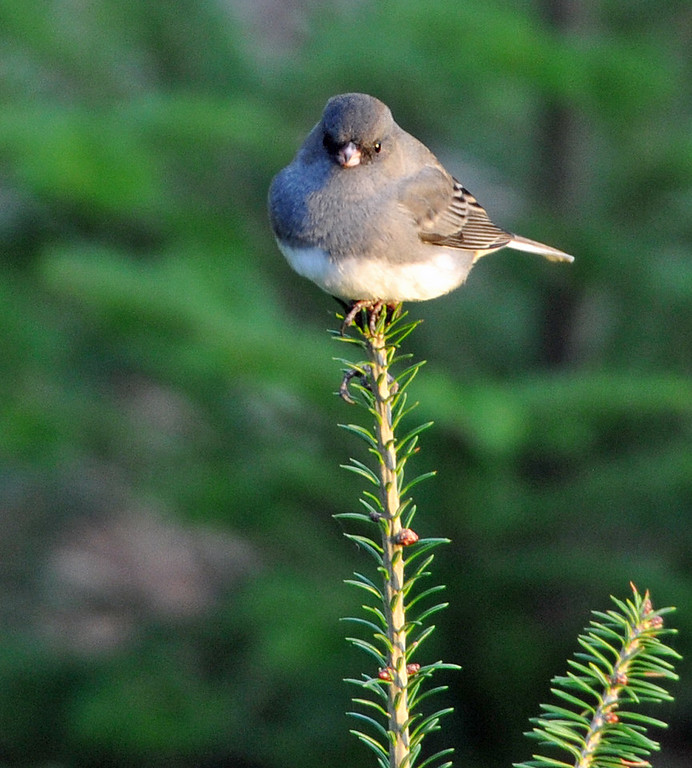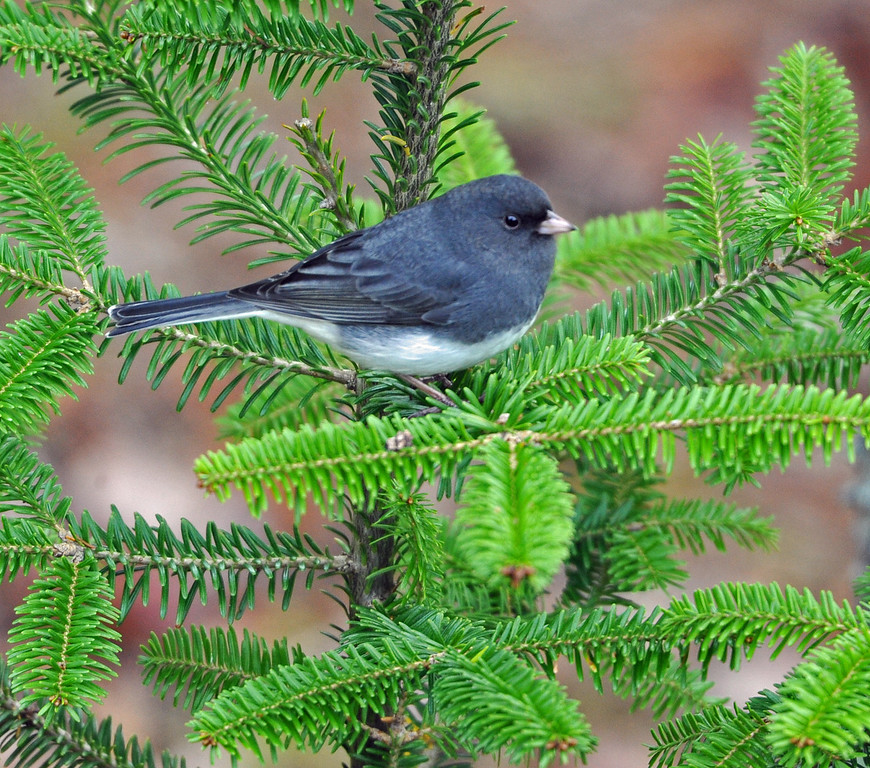Sparrows are more noticeable now that the leaves are mostly gone and the small birds are gathering in flocks. Basically, there are two types of sparrows out there now: brown blurs and white-streaked gray blurs. As to the grays, we seem to be getting more than our usual share. They’re Dark-Eyed Juncos and many are year-round residents here.
But this year, apparently, more of their Canadian relatives have decided to visit and join the family feeding flocks here. Winter flocking is thought to be a defensive maneuver: the more eyes and ears they have, the easier it is for sparrows (and Crows) to detect hawks and owls that can see them better in leafless vegetation and on bare or snow-covered ground.
No one seems to know why these birds are called Juncos, however, that name is derived from the Spanish word for the rush plant. Similarly, some people call them “Snow Birds,” derived from inaccurate yarns about the bird’s appearance predicting snow.
(Brooklin, Maine)


